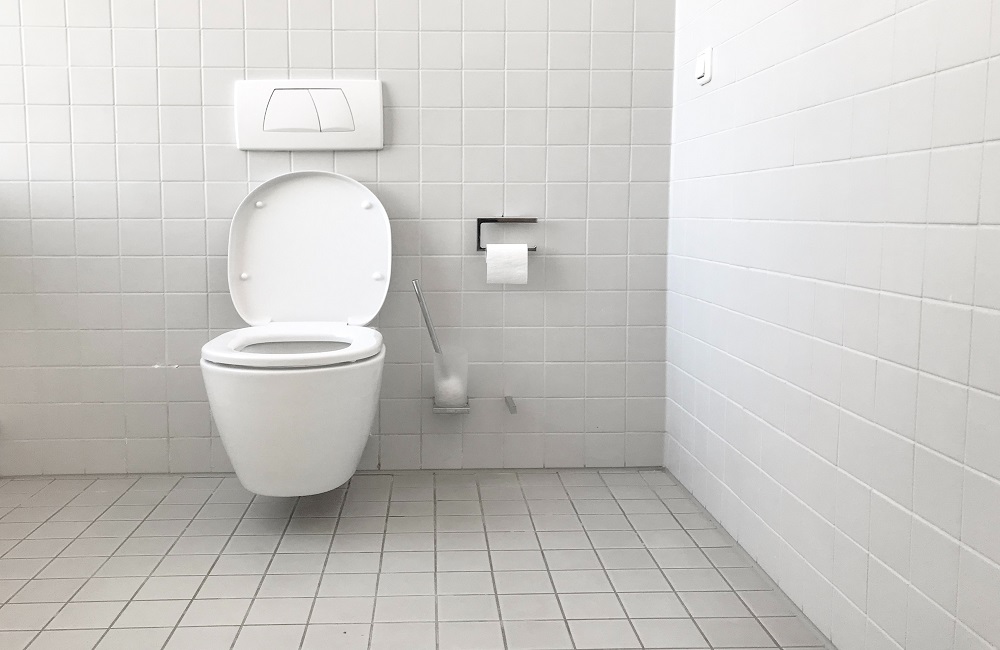Unclogging your toilet can be a daunting task, but oftentimes it’s something that needs to be done quickly. And what’s the first tool you reach for?
Your trusty plunger. But what if you find yourself plunging away, only to find that the clog is still there? Don’t worry – you’re not alone. In this blog post, we’ll explore some reasons why your plunger might not be working.
What Is A Plunger?

A plunger is a tool that is used to unclog drains and toilets. It consists of a rubber suction cup attached to a handle, and it works by creating a vacuum that dislodges whatever is blocking the drain. When you use a plunger, the suction cup must be placed over the drain or toilet bowl and then pushed down and pulled up repeatedly to create suction.
There are actually two types of plungers: the cup plunger and the flange plunger. The cup plunger is the type that most people are familiar with – it has a flat suction cup that can be used on sinks, tubs, and toilets. The flange plunger, on the other hand, has an extension on the bottom of the cup that fits into the toilet bowl drain. This type of plunger is more effective for unclogging toilets.
When using a plunger, there are a few tips that can make the process more effective. First, make sure that there is enough water in the sink or toilet bowl to cover the suction cup. This will help create a tighter seal and increase suction. Second, be sure to use a proper plunging technique.
You should use a pumping motion, with short, rapid plunges, rather than long, slow pushes. Finally, it’s important to use the right type of plunger for the job. A cup plunger may work for small sink clogs, but a flange plunger is necessary for more stubborn toilet clogs.
Why Is My Plunger Not Working?
These are the 5 different reasons why your plunger is not working!
1. Your Plunger Is Not the Right Size
It may sound obvious, but it’s important to make sure you’re using the right size plunger. Not all plungers are created equal, and using the wrong size can lead to ineffective suction. Standard plungers are generally the best type for your toilet. However, if you own an elongated toilet bowl, you may need an accordion-style plunger.
2. You’re Plunging Incorrectly
Plunging is not just about brute force – it requires a technique. Make sure you’re holding your plunger upright with a firm grip. Position the plunger so the flange fits snugly inside the opening of the toilet bowl and create a seal. Use steady downward pressure to push and pull the plunger handle up and down. If you’re not using enough force or are not creating a good seal, the clog will not dislodge.
3. The Clog Is Too Large
Unfortunately, a plunger can’t always fix every kind of clog. If the clog is too big, the pressure from plunging may not be enough to clear it. In this case, you’ll need to use an auger or call in a plumber to help solve your toilet troubles.
4. There’s a Bigger Plumbing Issue
If your plunger is not working and your toilet continues to experience clogs, it could be a sign of a bigger plumbing issue. The clog may be further down the pipe or there may be a problem with the plumbing itself. It’s best to call in a professional plumber to diagnose and fix the underlying issue.
5. You’re Using the Wrong Plunger Type
Believe it or not, there are actually two types of plungers. The first type is the cup plunger, which is typically used for sinks and bathtubs. The second type is the flange plunger, which is what most people associate with plunging toilets. If you use a cup plunger on your toilet, it won’t create enough suction to dislodge the clog. Make sure you’re using the right type of plunger for the job.
How To Fix My Bathroom Plunger?
If it happens that your plunger is not working, here are some easy ways to fix your plunger!
1. Check for Blockages
When your bathroom plunger fails to work, the first thing you should do is try to identify what’s causing the blockage. Some of the common reasons include hair, soap scum, and toilet paper blocks. If you can’t see the blockage, you should use a flashlight and a mirror to check the drain opening. During this process, you might notice that your plunger has some debris that could be obstructing its effectiveness. In this case, use a brush or hot water to clean it thoroughly.
2. Correctly Place The Plunger
The way you position your plunger can significantly impact its effectiveness. When using the plunger, you should ensure that it adequately covers the toilet’s entire drain opening. To achieve this, place the plunger’s cup directly over the drain hole and push it down towards the hole’s center. Ensure that you don’t trap the air inside the cup.
3. Add Some Lubrication
If you have an older plunger model, it might require some lubrication. This helps the plunger to slide more effortlessly inside the drain, creating an effective suction. You can use petroleum jelly or any other water-based lubricant to add some lubrication. Apply the lubricant to the edge and inside the plunger’s cup before using it.
4. Use a Chemical Drain Cleaner
Sometimes, a plunger may not be enough to unblock your bathroom drain, especially if the blockage is deep inside the pipes. If that’s the case, you can consider using a chemical drain cleaner. Drain cleaners come in liquid or gel form that you can pour down the drain and leave for some time. These products contain strong chemicals that dissolve the hair, soap scum, and other debris that’s causing the blockage.
5. Seek Professional Assistance
If none of the above fixes work, it is best to seek professional assistance. A professional plumber has the necessary expertise and tools to unclog even the most challenging bathroom drain blockages. However, it’s crucial to find a reputable and experienced plumber to avoid shoddy jobs or high charges.
How Do You Unclog A Toilet When A Plunger Doesn’t Work?
You can try other methods aside from wasting your time trying to fix your broken plunger. Here are the things you can do alternatively!
1. The Hot Water Method
One of the most popular ways to unclog your toilet is by using hot water. Simply pour a bucket of hot water from a height into the bowl and let it sit for a few minutes. The heat and pressure of the water can help break up whatever is causing the clog. After a few minutes, flush the toilet and see if it worked. If not, try the same method again.
2. The Dish Soap Method
Another simple solution is to use dish soap. Pour a cup of dish soap into the bowl and let it sit for a few minutes. Then pour some hot water into the bowl and let the mixture sit for around 10 minutes. Flush the toilet and see if it worked. If not, try repeating the process a few times.
3. The Bleach Method
If you have bleach, it can also be used to unclog your toilet. Pour two to three cups of bleach into the bowl and let it sit for about 10 minutes. Then flush the toilet and see if it worked. But, keep in mind that bleach can be harmful to the environment and should be used with caution.
4. The Plumbing Snake Method
If none of the above methods work, a plumbing snake may be required. A plumbing snake is a flexible cable that can be inserted into the toilet bowl. Turn the handle clockwise to push the cable through the pipes and break up any blockage. Once the blockage is cleared, you can flush the toilet.
5. Prevention Techniques
In the future, try to avoid clogs by flushing frequently and not flushing anything other than toilet paper down the toilet. Additionally, regular maintenance of your toilet can prevent clogs from happening.
Final Words
A plunger is a helpful tool that every homeowner should have on hand. However, if yours isn’t working as it should, it can be frustrating and cause unnecessary stress. Fortunately, by following the steps listed above, you can fix your plunger and address your plumbing issues with confidence.
Remember, if all else fails, don’t hesitate to call a professional plumber for help. With some patience, determination, and the right tools, you’ll be able to clear those pesky clogs in no time.


